- Home
- Curriculum
- Assessment & Reporting
Assessment & Reporting
Assessment
At Jubilee High School assessment forms a fundamental feature of our rainforest curriculum. It ensures that students have secured their knowledge before it continues to be grown, therefore allowing the curriculum to be adapted to meet the needs of the learners. There are two main ways in which we assess pupils to ensure their learning is secured before moving on. These are as follows:
- Formative assessment
- Summative assessment
Formative assessment is what we want teachers to focus on most. This is because research evidence tells us that this has the greatest impact on learning. It does not involve the grading of work but instead the teacher identifying pupils’ strengths and weaknesses and then adapting their teaching to help pupils improve.
Formative assessment
These assessments are focused on smaller sections of the curriculum and will take a variety of low stake forms with the aim to move students forward in their learning.
KS3
Within each term there will be three formative assessments in core and options subjects and two in practical subjects. Students will recieve feedback for these assessments in a variety of ways to help support the teaching and learning process.
KS4
Students will recieve three formative assessments across a term which are fedback on in both their core and options subjects.
Some examples of what form formative assessments may take at both KS3 and KS4 are shown below:
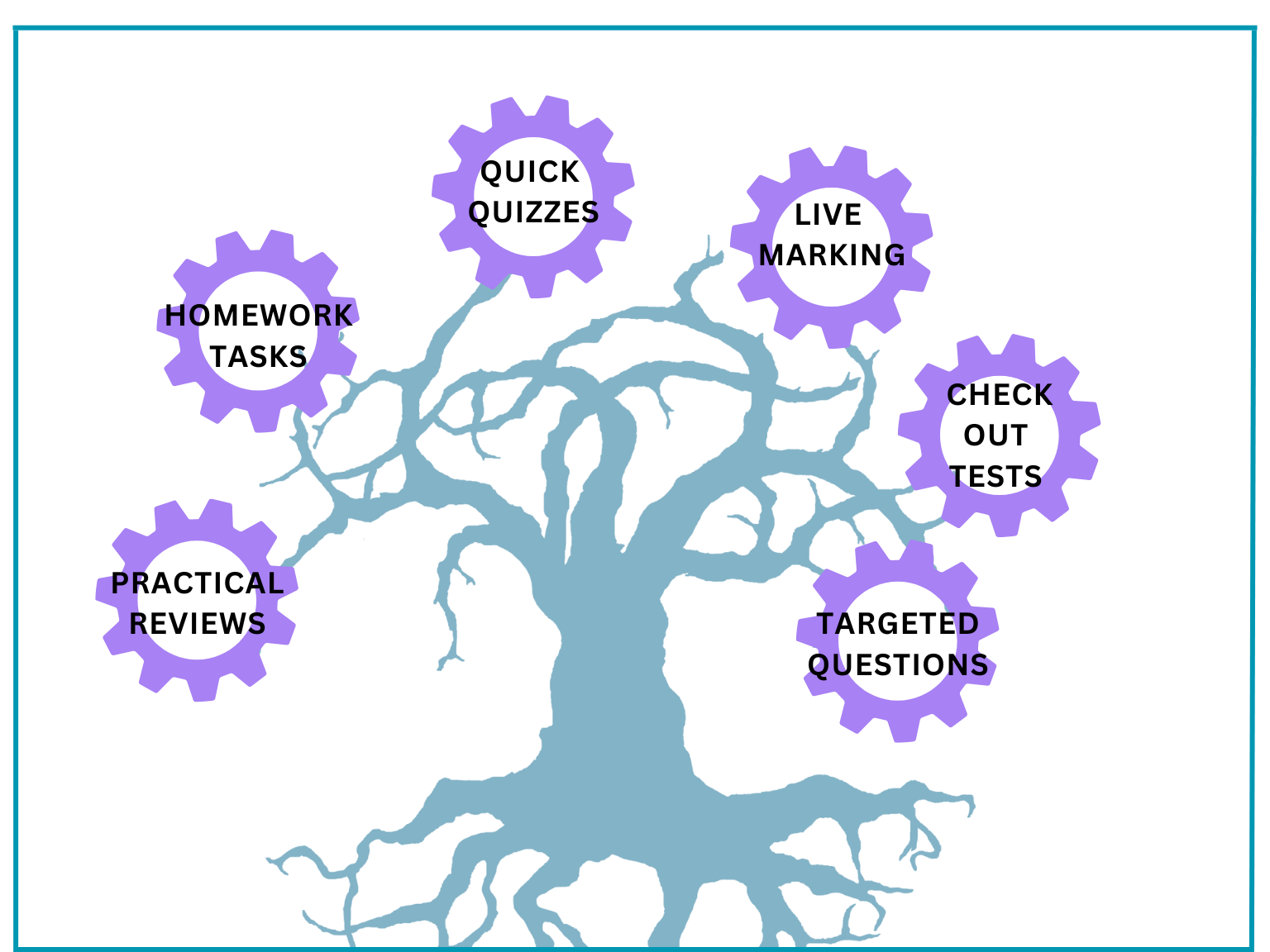
The feeback on these formative assessments at KS3 and KS4 may take several forms such as but not limited to:
- Self assessment
- Peer assessment
- Teacher written feedback
- Whole class feedback sheets
- Verbal feedback
Summative assessment
These will take place at the three end of term points throughout the year. The aim of these is to assess student attainment in their knowledge and skills in each subject across the term. Students will receive more detailed feedback on these assessments which will include:
- An effort grade (A1, A2, A3, I1, I2, I3)
- A GCSE grade or KS3 level.
- Specific areas that 'went well'.
- Specific target areas addressing misconceptions which will enable continued progress.
Literacy feedback
When given feedback on written formative and summative assessments students will receive feedback on their literacy misconceptions using the following codes:
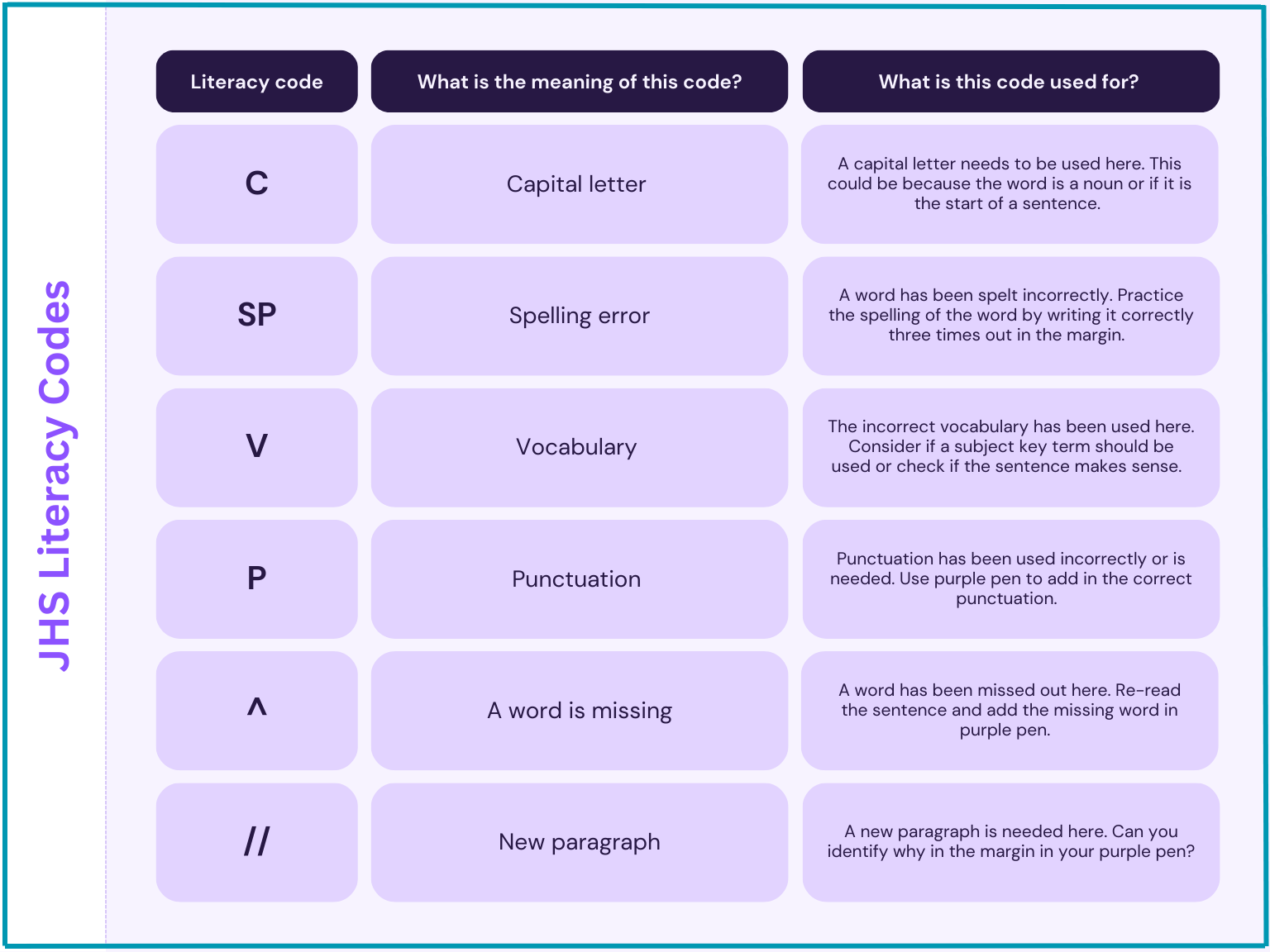
Dedicated Improvement and Reflection Time (DIRT)
The feedback that students receive for formative and summative assessments will be given as 'actions' to ensure that students are able to effectively use the feedback they have been given to further their progress. DIRT tasks will be completed by students in purple pen.
Reporting to parents
Students and parents will receive three termly reports throughout the academic year.
Reports will contain the following information for each subject:
- An attainment judgement (working at):
- Worded working at level for KS3
- GCSE working at grade for KS4
- A judgement on the students attitude to learning and effort in three areas:
- Classwork
- Homework
- Resilience
The working at attainment judgement that students receive is a triangulation of the data gleaned from summative and formative assessments, their progress and standards evidenced in their work and the informal observation of how they are engaging in class.
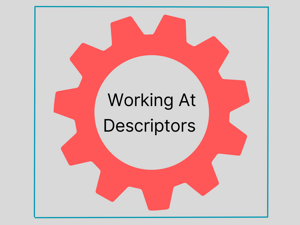 |
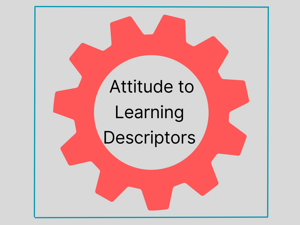 |
Target grades
Key stage 3
We do not assign target grades to pupils at key stage 3 as we do not want to put any limits on their aspirations. We want to encourage the mind-set where all pupils strive for excellence and a culture of ‘I can’t do yet’ rather than ‘I can’t do.’
We do however use their achievement scores at key stage 2 and CAT4 tests taken in year 7, to assign each pupil a starting point. For subjects where these may be less useful in identifying prior skills, such as Music, Art, Drama and Physical Education, teachers will carry out baseline assessments during the autumn term of Year 7 and assign starting points based on this information. It must be stressed that this process is only a start point. We also recognise that key stage 2 tests and CAT4 tests only measure attainment at one snapshot in time. For this reason, we don’t assign rigid ‘flight paths’ for pupil progress; to do so would seem to be entrenching pre-existing inequalities in attainment measured at that one point in time. We also recognise that pupil progress isn’t linear and rarely follows predictable trajectories.
Based on their identified start points, pupils on entry will be placed into one of three attainment bands for each subject. These attainment bands are not fixed and where a pupil is working consistently at the level above, their band should be changed. No pupil can be moved down bands.
Attainment Band |
'Expected' GCSE Outcome |
| Mastering | 7-9 |
| Securing | 5-7 |
| Progressing | 1-5 |
Internally within each department the worded levels that students are working at are then used in conjunction with the attainment bands to see how students are progressing towards what would be expected for them at GCSE. This then information is then used to identify where intervention may be required.
Please see the progression charts below.
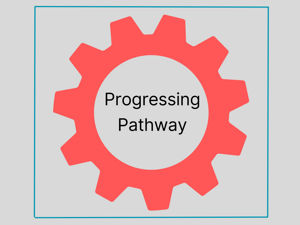 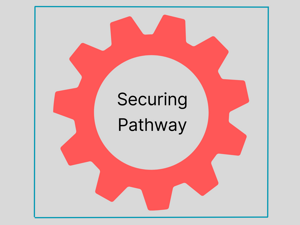 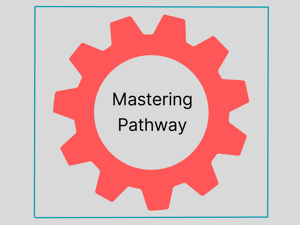 |
Key Stage 4
At KS4 students are made aware of their aspirational FFT target in each subject which is externally worked out using pupils key stage 2 outcomes. It is this data which is used to measure the overall school progress. However, as with KS3 we encourage students to go beyond this target to achieve the best possible outcomes.



